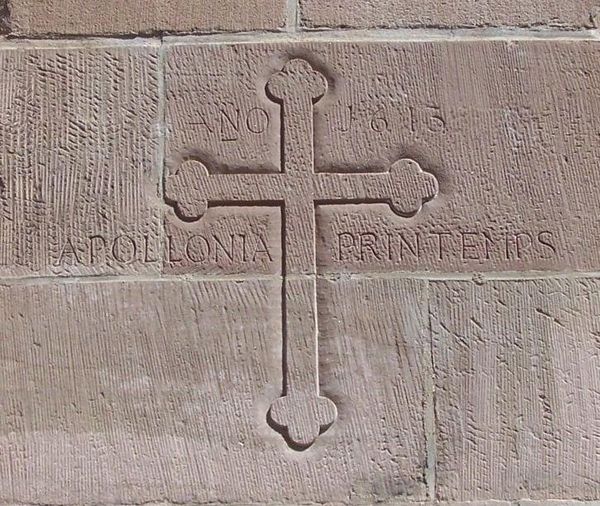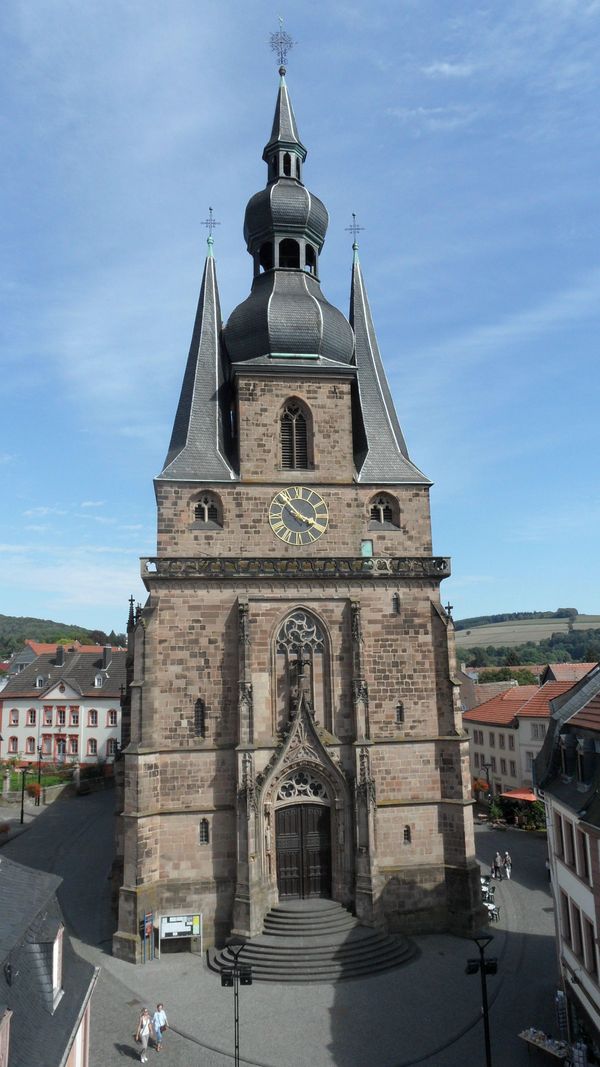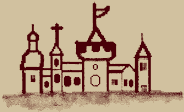ANNO J6I3 + APOLLONIA PRINTEMPS
In German script (but not only there – it has spread through nearly all languages based on Latin) we have some fancy signs indicating special rules. Like the straight line written over a letter. This indicates that this letter is doubled. If you see that letter – let’s say above an „n“, it shows there should be „nn“. Same with any other letter available. Problem is not to mix it up with the dash above the „u“ or „n“ differing both. Well, it’s as always a matter of consideration.
In my hometown St. Wendel we have a nice example for such a line written on the walls of our catholic church. On the southern side you can see a cross with one word written in each field, well, actually there are three words and a number.

It says "ANO" - "J6l3" and below "APPOLONIA" - "PRINTEMPS". The line can be found in the first word but not above but beneath the "N". Thus "ANO" becomes "ANNO" = "in the year".
The number is a bit weird as well. Today we would write "1613" but they made it "J6l3".
According to a book called "Schluessel zu alten und neuen Abkuerzungen" (Key to old and new abbreviations") published by Paul Arnold Grun (Reprint 1966) explains the "j" was a short form of the Roman "1,000" => "j" plus 613.
"APPOLONIA" was a common first name for girls in our area and has been until first half of last century.
Now "PRINTEMPS" is French for German word "Fruehling" = "spring".
The cross indicates that in 1613 Appolonia Printemps died and was buried right there beneath the wall of our church (there has been a cemetery around the church until the 1780s).
It was one of the mysteries I could not solve for years. See, I'm one of the tour guides for St. Wendel and see that sign nearly every week. Our church death records start in the 1680s so she is not mentioned there. But no other record in our local archives indicate a family named "Printemps" or "Fruehling". A mystery still to be solved.
A couple of months ago during one of my tours someone told me I may consider an alternative of "Fruehling". An old German word for "spring" is "Lenz" (actually, there is an German song "Veronica, der Lenz ist da" => "Veronice, the spring has come"). And so I found Nickel Lenz, a stone mason in St. Wendel who lived on the edge of 16th to 17th century. He's first mentioned in 1580 when he did some work together with his wife "Ele" (we only have those three letters for her first name). And in 1581 she was payed for independend work she did on one of the town gates of St. Wendel.
In 1605 Nicolas’ widow lives in a house of Niederweiler, a suburb of St. Wendel, together with the widow of Claus Haffner. She is mentioned there again in 1609 and 1611 (the last list of that sort – for taxes – we have).
I assume – I cannot proof it – that she died in 1613 and was buried there beneath the wall on the city cemetery. And someone honored her and her craftmanship in memorizing her death on the wall – it’s the only one we have. No other death is mentioned there – well, besides the death of St. Wendelin – our church patron - in whose memory the church was build at all.


